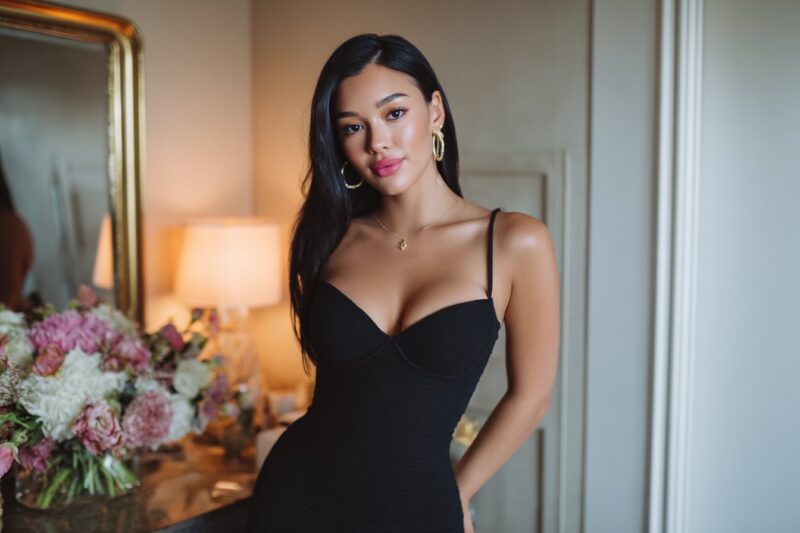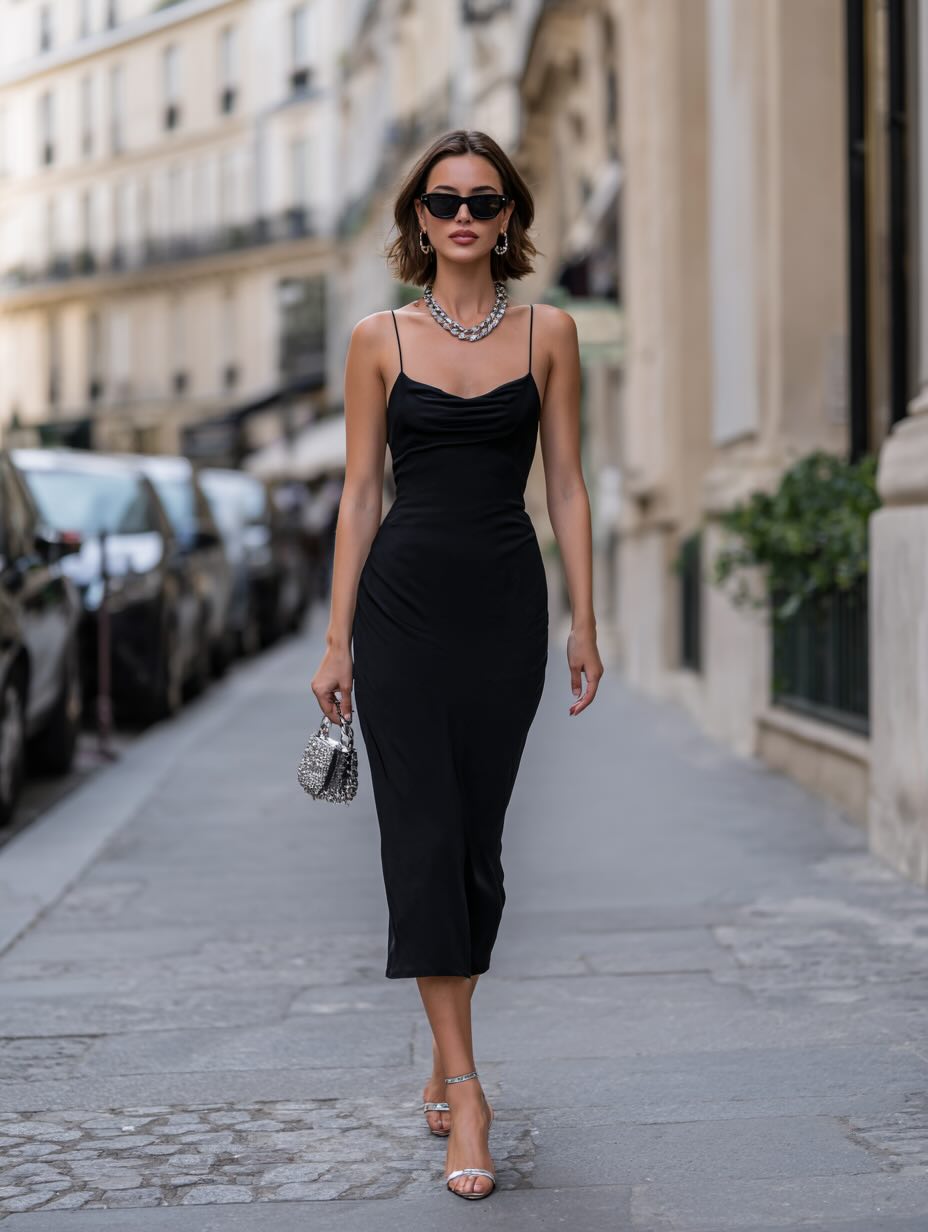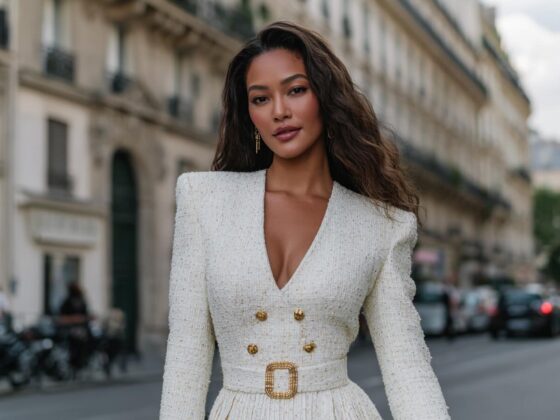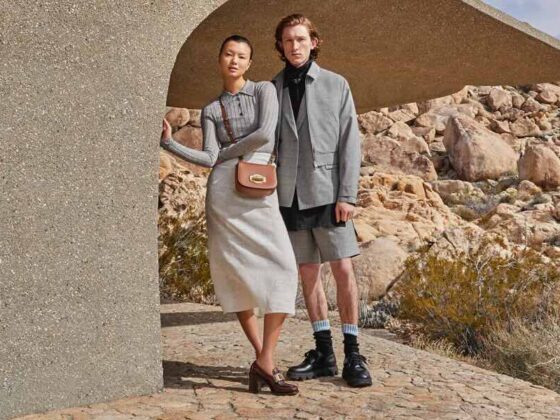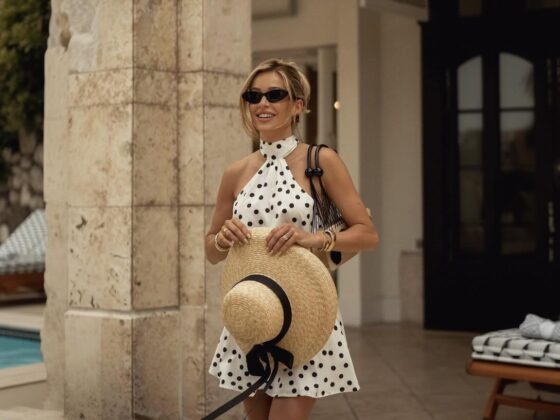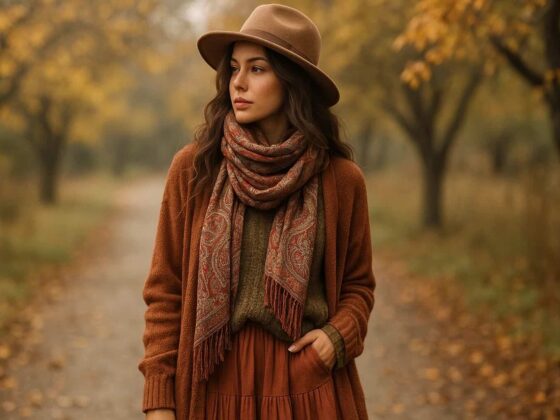The Timeless Case for a Little Black Dress
A century on from its 1920s debut, the little black dress is still the fastest route to looking pulled-together. Here’s the short history, the real reasons it endures, and the practical guidance—fit, fabrics, shoes, and styling—to find your forever LBD and wear it five different ways without anyone clocking the repeat.

The little black dress—yes, that little black dress—has been solving outfit emergencies for a hundred years. It began as a radical act of simplicity and became a modern uniform. This guide blends a quick history with pragmatic, inclusive styling advice so you can choose your perfect LBD and make it earn its space in your closet.
The little black dress: a short history with a long shadow
There’s a reason editors keep a black dress on a hook behind their office door. It is the meeting, the dinner, and the “you absolutely must come” RSVP—solved. The habit traces back to the 1920s, when a simple black sheath appeared in Vogue and was hailed as “Chanel’s Ford,” a Model T of a dress: streamlined, accessible, and made to go everywhere.
By the early 1960s, the LBD had its Hollywood close-up. Audrey Hepburn’s sleek Givenchy gown in Breakfast at Tiffany’s turned “basic black” into cultural shorthand for chic. In the decades since, the dress has adapted with the times: disco gloss in the ’70s; big shoulders and drama in the ’80s; slip-dress minimalism in the ’90s; sculptural cutouts and sharp tailoring more recently. The constant is the one-piece promise: zip, go, done.
Why the LBD still wins now
Versatility math
One black dress can pass for creative office, cocktail reception, and Sunday brunch by moving three parts: shoe, bag, and jewelry. Black’s neutrality makes the swaps frictionless; the silhouette sets the mood.
The psychology of black
Black reads polished even when the fabric is humble, because uniformity signals intention. It throws focus onto line and proportion—your silhouette becomes the statement, not a print fighting for airtime.
“The best LBD doesn’t erase you; it edits the noise around you.”
How to choose your forever LBD
Silhouette & proportion
- Shift: Straight through the body; brilliant for hot climates and wheelchair users who prefer non-binding waistlines. Works with flats or low heels.
- Sheath: Skims and defines. If you love a blazer, this is your friend—shoulders are the frame.
- A-line: Adds ease at the hip and movement at the hem; great for pear shapes or anyone who sits most of the day.
- Slip: Bias-cut fluidity with minimal seams. Looks effortless but lives or dies by fabric quality and underpinnings.
Height & hem placement
- Petite: Just above the knee, or a midi hitting mid-calf (avoid the widest point).
- Tall: Midi to just below the knee balances long limbs without going prim.
- Mobility or prosthetics: Clean A-lines and midis with side slits reduce catch; seek fabrics with stretch recovery.
Fabric & drape
- Matte knits (ponte, scuba, compact jersey): Forgiving, travel-friendly, structured enough for work.
- Woven crepe: Elegant drape, camera-kind, resists glare under bright lights.
- Satin/silk: Evening-ready; bias cuts move beautifully—add a slip for opacity and glide.
- Lace, tulle, or embellishment: Let texture talk but keep the silhouette simple to stay timeless.
Necklines, sleeves, shoulders
- Square/boat: Widens the shoulder line; balances curvier hips.
- V-neck: Elongates; friendly to larger busts.
- High neck + cutaway shoulder: Graphic and modern; pick softer fabrics if you dislike rigidity.
- Sleeves: Cap sleeves can “cut” the arm; try elbow length or a sheer long sleeve for ease and coverage.
Support acts (underpinnings)
Smooth-line bras and slips matter more than price tags. If straps will show, make them deliberately pretty—or completely invisible. No in-between.
Style it three ways today
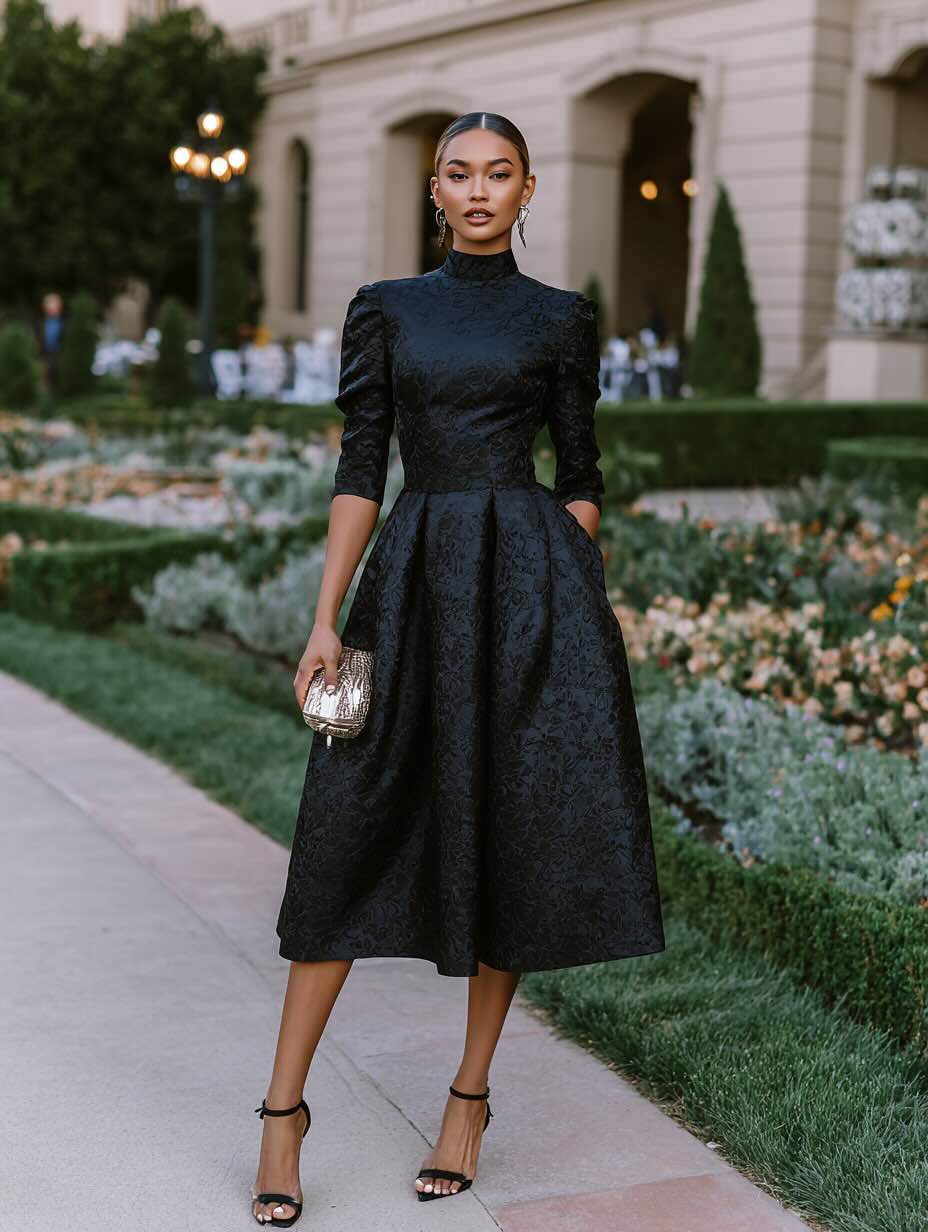
1. Polished office to dinner
Sheath in matte crepe + structured blazer + block-heel pumps. At 6 p.m., swap the blazer for a cropped cardigan, add a bold earring and a satin clutch.
2. Minimal brunch to gallery
Slip dress + flat slingbacks + compact crossbody. Layer a slouchy knit and silver hoops; a low bun keeps the line clean.
3. Wedding guest without panic
A-line midi + ankle-strap heels + soft metallic bag. Add a shawl or chiffon wrap; warm-toned jewelry adds glow.
Budget spectrum
- High-street route: Prioritize fit and fabric hand—ponte that doesn’t shine, crepe that drapes. Tailor the hem; it’s the cheapest luxury.
- Mid route: Seek lined wovens and real pockets; modular belts or removable straps create multiple looks.
- Investment route: Look for hidden architecture—horsehair braid at hem, full lining, bound seams, and high recovery fabrics. These dresses still look new on the twentieth wear.
Accessory logic
- Match visual weight: Chunky soles want denser fabrics; delicate strappy heels adore satin or silk.
- Color pop: Red, emerald, or cobalt accessories over black read intentional, not random.
- Belts: For shape on a straight dress, belt at true waist or just above the navel; hip belts skew ’80s unless the silhouette is deliberately oversized.
“When a dress works with three pairs of shoes you already own, it’s not a purchase—it’s a plan.”
Edge cases: making the LBD yours
- Modest dressing: High-neck midi with sheer sleeve; layer a fine rib turtleneck under slips.
- Plus sizes: Engineered knits with high recovery and elbow sleeves; prioritize shoulder fit and let a tailor finesse the rest.
- Petite: Cropped jackets and clean ankle hemlines keep proportions lively; avoid the mid-calf “wide point.”
- Tall: Bias-cut midis love long limbs; wider belts or statement cuffs balance scale.
- Sensory comfort: Matte, soft-hand fabrics (ponte, modal blends) and tag-less finishes reduce irritation.
Why we still call it timeless
The LBD endures because it’s not a single dress. It’s a system: a quiet backdrop for your earrings, your hairstyle, your life. It survives trend churn by being the steady partner to whatever fashion does next—be that a sharp cutout, a sculpted shoulder, or a playful bow. The silhouette may change; the promise does not.
TL;DR
- The LBD began as a radical act of simplicity; it still solves modern dress codes.
- Pick silhouette first (shift, sheath, A-line, slip), then fabric, then neckline.
- Hem aims: mid-knee for flats; just below knee for heels; match shoe visual weight to fabric.
- Style math: 1 statement + 2 neutrals; or belt + bold earring + low-profile shoe.
- Care smart: cold wash, inside-out, gentle cycle, air-dry to prevent fading.
Frequently Asked Questions
What exactly counts as a little black dress?
A short to midi black dress with simple lines, designed to dress up or down—a neutral canvas that flexes across occasions.
Is the LBD appropriate for all occasions?
Nearly—but read the room. Black is perfect for cocktails, dates, and creative offices. For ultra-formal black tie, floor-length or specific colors may be expected.
How do I pick the right length for flats?
Aim for mid-knee or just above the ankle; true mid-calf can visually chop the leg unless balanced by a sleek shoe.
How can I modernize a classic sheath?
Add a cropped cardigan, sculptural earring, and a sleek slingback—or switch to knee boots and a wide belt in colder months.
How do I keep black from fading?
Wash cold, inside-out; use detergents for darks; air-dry; minimize heat to preserve color depth.
